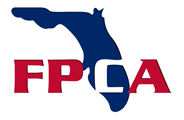COLORS
The color of concrete is made up of the paste (cement and water), matrix (paste and sand), and stone (coarse aggregate). Which components contribute mostly, or dominate the color contribution, depends on the finish selected and degree of exposure (The term “exposure” refers to the matrix and coarse aggregate). Form finishes to light exposures receive most of their color from the paste and matrix; whereas with deeper exposures, the coarse aggregate becomes the primary contributor to color.
Paste can be colored by pigments, which come in a variety of colors. However, paste is the binder in concrete resulting from the mixing of cement and water. This is a chemical reaction, and as such, can produce different results when variables are changed slightly. For example, if more water is added to a concrete mix, typically a lighter color of paste will result. This is one reason it is important to specify PCI Certification to help ensure that producers have all the appropriate equipment and quality control procedures in-place. Paste dominate finishes are usually more susceptible to color variation and changes in color with time.
Aggregates come in an array of colors. Other than natural variation of color throughout a particular quarry, once incorporated into precast concrete, aggregates provide great color stability.
VENEERS
Precast can be veneered or embedded with many traditional materials. These include brick, tile, and terra cotta which are usually embedded or cast into precast; and granite, limestone, and marble which are typically veneered via pins or connectors. This allows for differential movement between these materials which are often large sections. Precast offers a faster, more durable, and sustainable method to build with these materials. For specific information on clay and stone veneer, see these Designer’s Notebooks:
Since precast concrete is cast into forms, a variety of shapes and details can be accomplished in precast concrete. Formliners can also be used, especially when repetitive patterns or unique textures are needed. To learn more about forms and design, see the following Designer’s Notebooks.
PAINTING AND STAINING
Precast concrete can be painted or stained. Once only common to see in indoor applications, concrete coloring and replicative finishes of other building materials onto precast or form lined concrete is becoming more popular utilizing concrete coatings.
Painting is common on many projects, but the natural permeability of concrete can make these applications require maintenance over time. Note that latex paints will seal concrete pores and may trap water within the substrate.


 Photo via Metromont
Photo via Metromont Photo via Skanska
Photo via Skanska Photo via International Casting
Photo via International Casting Photo via Skanska
Photo via Skanska Photo via Metromont
Photo via Metromont
 Sand or abrasive blasting provides all three degrees of exposure noted above.
Sand or abrasive blasting provides all three degrees of exposure noted above. Hammered-rib or fractured-fin designs creates a bold, deeply textured surface by casting ribs onto the surface of the panels and then randomly breaking the ribs to expose the aggregate.
Hammered-rib or fractured-fin designs creates a bold, deeply textured surface by casting ribs onto the surface of the panels and then randomly breaking the ribs to expose the aggregate.
 Exposed-aggregate finishes, via chemical retarders or water washing, are achieved with a non-abrasive process that effectively brings out the full color, texture and beauty of the coarse aggregate.
Exposed-aggregate finishes, via chemical retarders or water washing, are achieved with a non-abrasive process that effectively brings out the full color, texture and beauty of the coarse aggregate. Acid etching dissolves the surface cement paste to reveal the sand, with only a small percentage of coarse aggregate being visible, providing a light exposure.
Acid etching dissolves the surface cement paste to reveal the sand, with only a small percentage of coarse aggregate being visible, providing a light exposure.



 Honing or polished finishes are achieved by grinding the surface to produce smooth, exposed-aggregate appearances.
Honing or polished finishes are achieved by grinding the surface to produce smooth, exposed-aggregate appearances.
 Photo via
Photo via  Photo via
Photo via